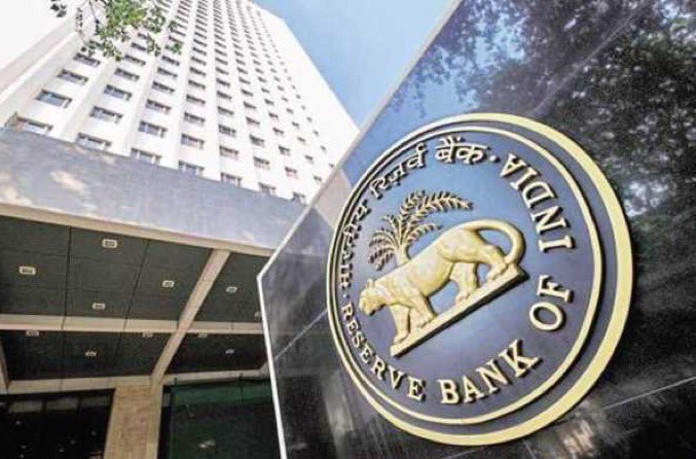If you’re a business-minded Indian who’s been reading the newspapers as of late, you have likely heard a lot of chatter about a “Liberalised Remittance Scheme”. What exactly is the liberalised remittance scheme? Does it affect you in any way? The answer is: yes, if you plan on sending money abroad or investing in real estate overseas.
The Liberalised Remittance Scheme, or LRS for short, is a platform for resident Indians who’re interested in buying property abroad, investing in overseas businesses, or who otherwise wish to “remit” money out of India.
The LRS is the only way of going about doing this, which is why it’s important to learn how it works. While it may look complicated at first, the LRS actually simplifies things in a big way. Before the LRS, resident Indians needed the approval of the Reserve Bank of India (RBI) to remit money abroad. But with the LRS, Indians can remit money abroad far easier than ever before.
To help you out, we will go over all of the terms above and talk about how the LRS works and how you can use it to invest in property abroad, among other things.
What is the Liberalised Remittance Scheme (LRS)?
The Liberalised Remittance Scheme, or LRS, was introduced to India on February 4th, 2004. The Reserve Bank of India (RBI) created the LRS to accommodate resident Indians who wished to invest in property abroad or otherwise send money outside the country.
The Foreign Exchange Management Act (FEMA) regulates the flow of money in and out of India, while the LRS provides a way for resident Indians to invest their money overseas without the approval of the RBI.
The RBI, as India’s central bank, regulates the inflow and outflow of money. A sudden outflow of rupees could destabilize the currency and damage India’s economy, which is why the RBI limits the flow of money.
Another reason the RBI and India’s government are so intent on controlling the outflow of money from India is to ensure that none of it is used to fund organized crime or terrorism.
If you aren’t familiar with the term “remittance”, it is essentially any money an individual sends to another country. An example of an outward remittance is the money that an Indian resident earns in India and sends to another country. An inward remittance would be the exact reverse, a foreign resident sending money to India.
A brief history of liberalisation in India
Liberalisation in India is a fairly recent change. Liberalisation began in 1991 with a a number of major reforms that carry on to the present day. Their goal was to create a more market and service-oriented economy in India and encourage private and foreign investment.
Before 1991, the Indian economy was mostly closed to the outside world. A number of restrictions were in place on rupee conversion and transactions. In fact, the rupee wasn’t convertible at all. Also, high tariffs kept foreign goods from entering the Indian market. After 1947, a system of licenses, regulations and red tape called the Permit Raj was in place. The Permit Raj made setting up and running a business in India an incredibly difficult task.
In 1991, struggling with an economic crisis, the Indian government introduced a number of reforms, as part of a deal with the International Monetary Fund (IMF). The reforms put an end to the Permit Raj, lowered tariffs and interest rates, and created a friendlier environment for foreign investors.
Towards the end of the 20th century, India transitioned into a free market economy. Largely as a result of the reforms of the 1990s, life expectancy, literacy rates and economic growth rose greatly in the early 2000s.
The reforms continue to this day, albeit at a slower pace. The creation of the Liberalised Remittance Scheme is one of the later reforms to come out of the trend of liberalisation that began in 1991. Before the introduction of the LRS, Indian residents needed the RBI’s approval to send money overseas.
How can I invest in property abroad through the LRS?
Through the Liberalised Remittance Scheme, residents of India can remit funds of up to to $250,000 abroad in a fiscal year. For a set number of purposes, that is. That includes the right of an Indian to invest in property abroad, acquire shares overseas and invest in businesses and trust funds abroad.
Until 2015, the amount of money you could send abroad was limited to $200,000 under the LRS, but that limit was raised as a result of growing interest in overseas investments. Originally, the limit was set at $25,000 per year, but the RBI gradually raised it over the next ten years.
All remittances must be below or at the limit set by the RBI and must be properly declared. Remittances can be paid out through “authorized dealers”. Authorized dealers or “Authorized Money Changers” (AMCs) are entities the RBI has authorized to deal in foreign exchange. The RBI recognizes three categories of AMCs: Category-I banks, Category-II authorized dealers and Full Fledged Money Changers (FFMCs).
Currently, the RBI permits the following types of transactions through the LRS:
– Travel and tourism costs for a private visit to any country, except for Nepal and Bhutan
– Emigration costs
– Business trip costs
– Supporting close relatives living abroad
– A gift or donation
– Overseas education
– Overseas medical costs
– Purchase of shares and property abroad, as well as other investments
– Opening an overseas bank account
To remit funds, you will need to specify one of the purpose codes listed on the back of the Form A2, which is the form you must fill out beforehand.
Note that the list of permitted transactions above includes only the broad types of transactions allowed under the LRS. The list of purpose codes you must choose from is far longer, as they are far more specific.
Also, note that the LRS only applies to residents and ordinarily residents. The LRS doesn’t apply to NRIs (non-resident Indians). The remittance rules that apply to you will depend on your bank account type in India.
Non-residents with either a non-resident external (NRE) or foreign currency non-resident (FCNR) account can remit any amount they wish. However, there are restrictions to how much a non-resident can pay into either type of account.
Non-residents with a non-resident ordinary (NRO) account can remit up to $1 million per year. The remittance rules for non-residents are fairly complex and deserve a separate discussion.
The LRS permits minors to remit funds out of India, with approval from the minor’s natural guardians.
In conclusion, you remit up to $250,000 in a fiscal year without the RBI’s approval. That limit applies to any of the permitted types of transactions. If you want to invest in property abroad, your investment will have to be under or at the limit. Otherwise, you will need the RBI’s approval.
You will have to fill out a fair bit of paperwork for each remittance and you must use an authorized dealer. However, the LRS has made it far easier than ever before for an Indian resident to invest in property abroad. In the future, the RBI may raise the limit on outward remittance further.
Drawbacks of the Liberalised Remittance Scheme
However, the Liberalised Remittance Scheme does have a few drawbacks and limitations that you must be aware of.
The most obvious drawback is that you cannot remit more than $250,000 in one fiscal year, under the current rules. That can pose a problem if you plan to invest in property abroad, as property prices can be quite high overseas. To remit more than that, you need the RBI’s approval.
The LRS also has restrictions on where the money you wish to remit can come from. As it stands, you cannot remit money earned from:
– Lottery winnings
– Gambling proceeds
– Income from racing/riding or a similar hobby
– Other disallowed types of income
You cannot use remittances for the purchase of contraband items. Nor can remittances be made to any individual or entity whom the RBI suspects of having links to terrorism or organized crime.
While the LRS only allows individual residents to remit up to $250,000 in a year, family members can individually remit at or below that limit as well. That is a major benefit to residents who plan on jointly purchasing property abroad.
However, it is important to note that the Reserve Bank doesn’t permit club deals under the LRS. If your family members are not the co-owners or co-partners of an overseas bank account, investment or property, you cannot jointly remit under the LRS.
Lastly, the remittance limit of $250,000 refers to the total amount you can remit in a fiscal year, not for a single transaction.
Conclusion
Purchasing a property abroad is very similar to making any other type of remittance through the LRS. However, it also carries a number of other legal and tax implications for NRIs that you must learn about beforehand. We recommend you study the subject in depth, and read our guide on investing in overseas property before you dive into the world of overseas real estate investment.




